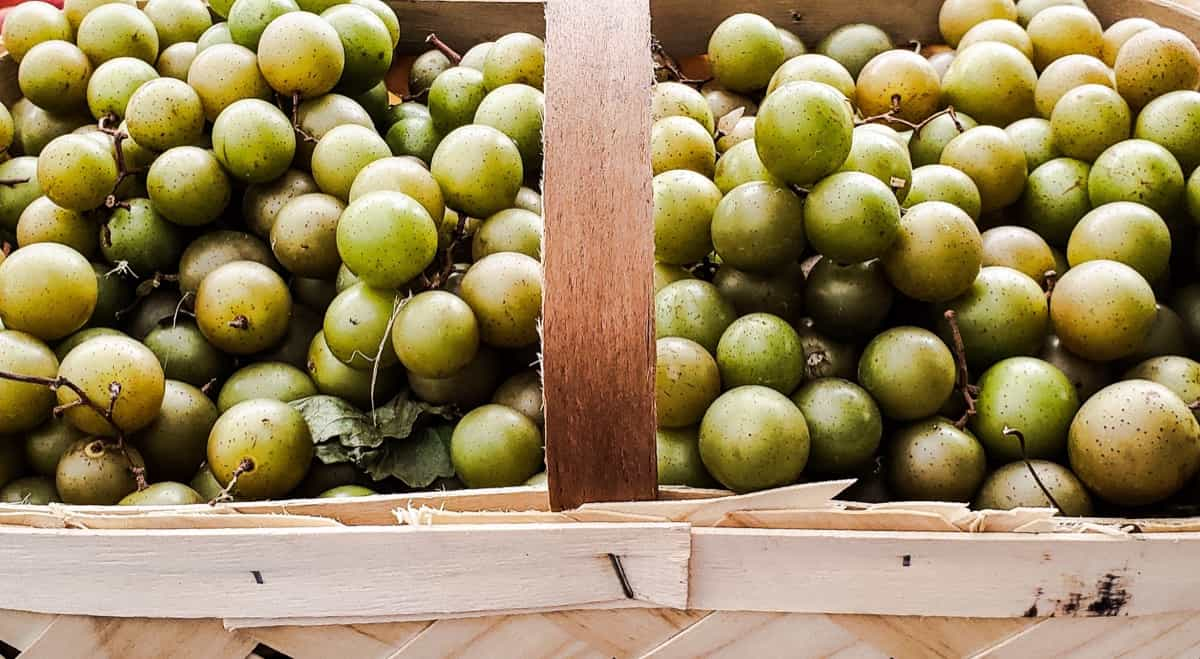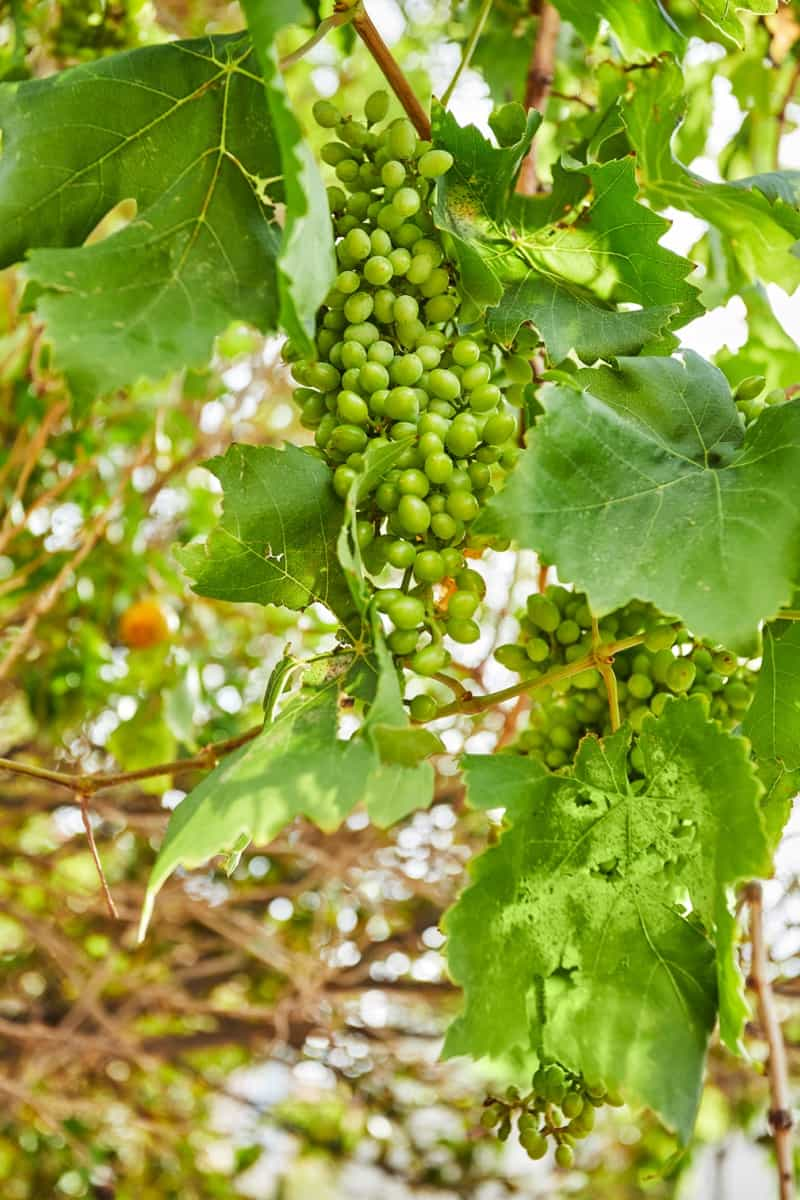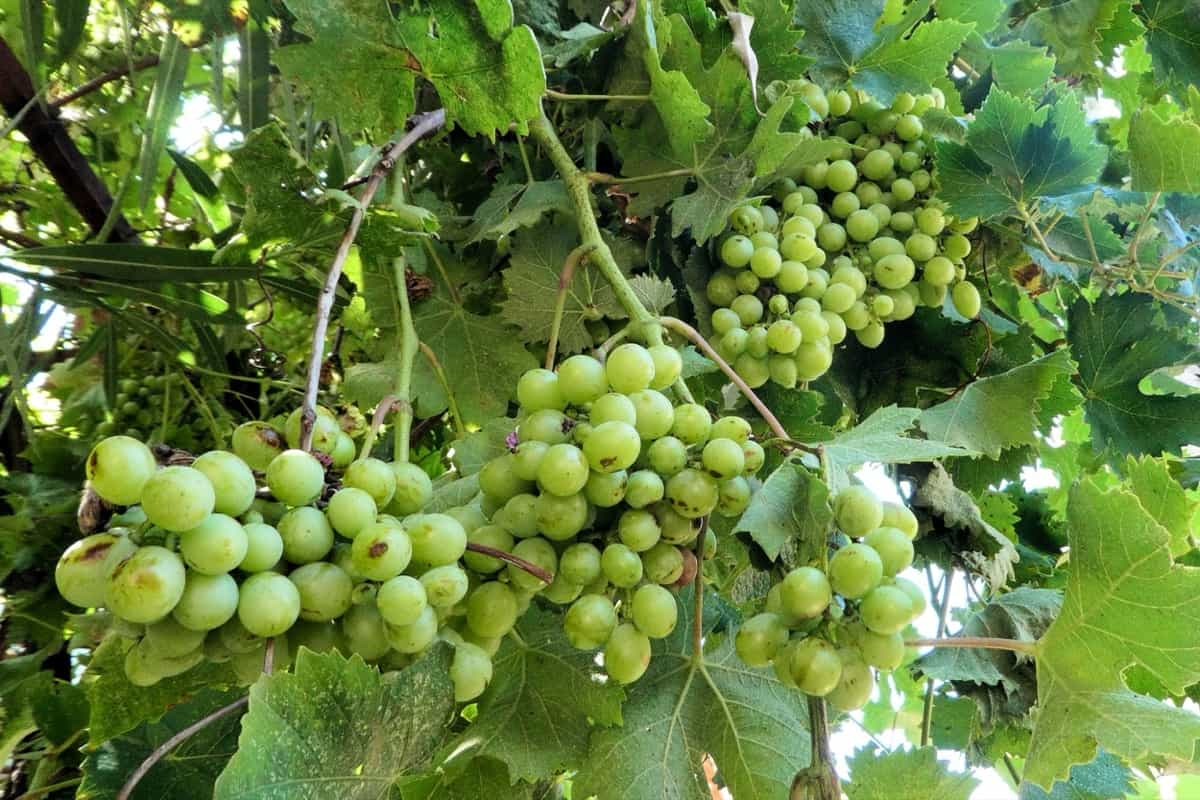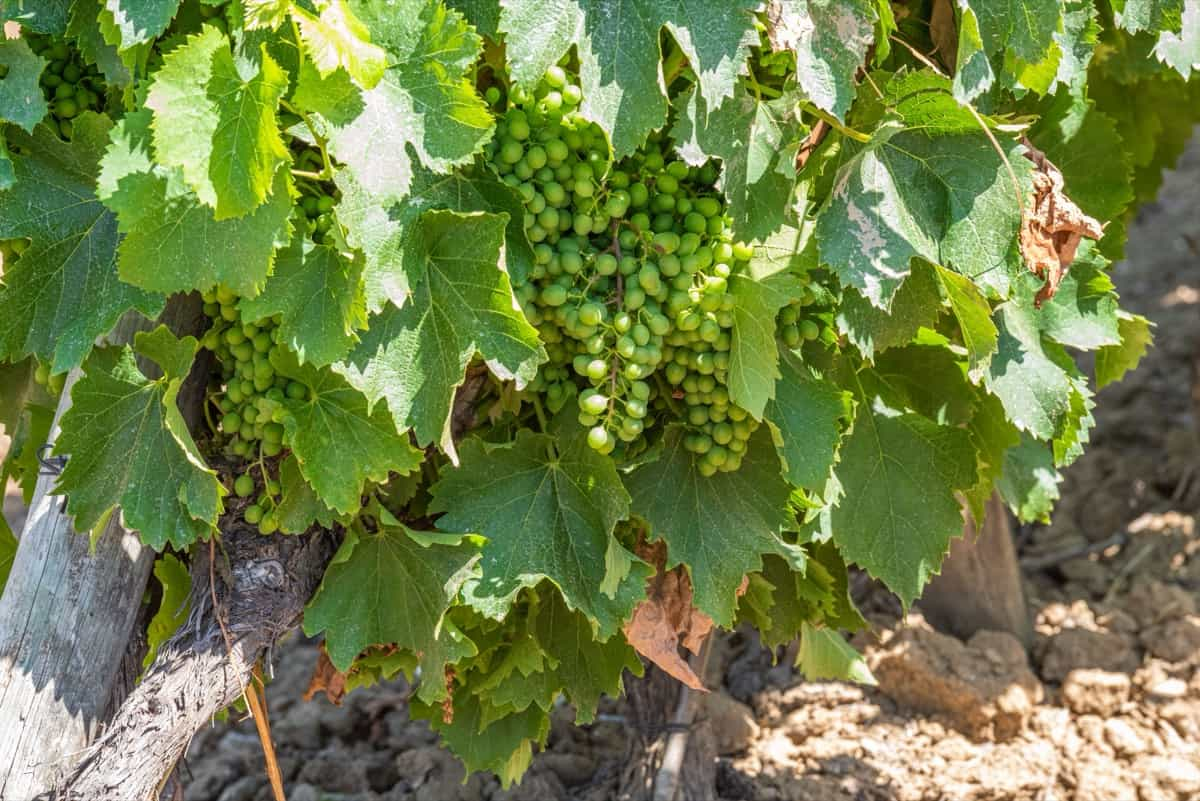Scuppernong Grapes (Vitis rotundifolia), commonly known as Southern Fox Grapes or muscadine grapes, is a delicious and unique variety of grapes that thrive in the Southern United States. These big, juicy grapes come in various shades of greenish bronze or green-gold, adding a touch of elegance to any garden. Growing Scuppernong grapes in home gardens offers several benefits that make it a good choice for any backyard enthusiast.

Growing Scuppernong Grapes
Choosing the Right Variety
Choosing the right variety of Scuppernong grapes is essential for a successful harvest in your home garden. Consider the climate in your area. Scuppernongs thrive in warm climates with long growing seasons, so it’s important to choose a variety that is well-suited to your specific region. If you live in a cooler climate, look for more cold-tolerant varieties.
Another factor to consider is taste preference. Different Scuppernong grape varieties have varying levels of sweetness and flavor profiles. Additionally, pay attention to disease resistance when selecting a Scuppernong grape variety. Certain varieties may be more resistant to common diseases, such as powdery mildew, which can help ensure healthier plants and higher yields.
Planting Your Tree
Timing
Timing is important for planting your Scuppernong grape tree. Ideally, it would help if you planted it in early spring or late fall when the weather is mild and there’s less stress on the plant. This gives the roots enough time to establish themselves before facing extreme temperatures.
Location
When choosing a location for your Scuppernong grape tree, keep in mind that these vines love sunlight. Look for a spot in your garden that receives 6 to 8 hours of direct sunlight each day. The more sun they get, the better their growth and fruit production will be.
Soil
As for soil requirements, Scuppernongs are quite adaptable but thrive best in well-drained soil with a pH level between 5.5 and 6.5. Before planting, make sure to amend the soil with organic matter to improve its drainage.
Propagation Methods
There are several methods you can use to propagate Scuppernong grapes in your home garden. One common method is through seed propagation. However, keep in mind that growing grapes from seeds can be a lengthy process and may not always result in the desired characteristics of the parent plant. Another popular method is through layering. This involves bending a vine down to the ground and burying a section of it beneath the soil.
Over time, roots will form on this buried portion, allowing you to detach it from the parent plant and create a new grapevine. Grafting is another effective way to propagate Scuppernong grapes. This involves taking a cutting or bud wood from an existing grapevine and attaching it onto rootstock that has been specifically selected for its disease resistance or other desirable traits.
In case you missed it: How to Build a Trellis for Grape Vines: DIY From Design Layout to Installation

You can also propagate Scuppernong grapes through cuttings. Take a healthy stem cutting with three nodes, remove the lower portion of the cutting leaves, dip it in rooting hormone if desired, and then place it in moist potting soil or vermiculite until roots develop.
Watering and Mulching
Proper watering ensures that the vines stay hydrated, while mulching helps to conserve moisture and suppress weed growth. When it comes to watering Scuppernong grapes, consistency is key. During the growing season, water the grape plant deeply, allowing the growing soil to dry out between each watering. Mulching around the base of the grapevines provides numerous benefits. It helps retain soil moisture, reducing the frequency of watering needed. Additionally, a layer of organic mulch acts as insulation for hot summers and cold winters.
Fertilizing
These luscious fruits require a balanced supply of nutrients to thrive, so it’s crucial to provide them with the right fertilizers at the appropriate times. When it comes to fertilizing, timing is key. In early spring, apply a slow-release fertilizer that is formulated for grapes. During the first year of planting, be careful not to over-fertilize. Too much nitrogen can encourage excessive vegetative growth at the expense of fruit production. Instead, focus on providing phosphorus and potassium to promote root development and overall plant vigor.
Pruning and Training
When it comes to pruning, it’s important to start early in the vine’s life. In the first year, focus on establishing a strong framework by pruning back any lateral shoots that may compete with the main stem. This will encourage vertical growth and allow for easier training later on. As the vine matures, continue to prune regularly during its dormant season.
Training is another crucial aspect of managing your Scuppernong grapevine. Choose a suitable support system, such as a trellis or arbor, that provides ample space for the vine to grow vertically while allowing sunlight penetration. During the growing season, guide new shoots along the support structure using ties or clips. Remember that each variety may have different requirements when it comes to pruning techniques.
Pest and Disease Management
One common pest that can affect your grapevines is the Japanese beetle. These voracious eaters can quickly defoliate an entire vine if left unchecked. To manage this pest, try using traps or applying organic insecticides specifically formulated for grapes. Another threat to your Scuppernong grapes is powdery mildew. This disease appears as a white color powdery coating on leaves and stems, inhibiting photosynthesis and reducing fruit quality. To prevent powdery mildew, ensure good air circulation around the vines by pruning them regularly.
Black rot is another disease that affects grapevines, causing dark spots on the plant leaves. To combat black rot, practice proper sanitation by removing infected plant material promptly and disposing of it away from the garden. It’s also important to keep an eye out for other pests, such as aphids, spider mites, and birds, that may damage your precious fruits. Consider using physical barriers like netting or introducing beneficial insects to control these pests naturally.
When and How to Harvest
Look for signs like a deep color change, a slight softness to the touch, and a sweet aroma emanating from the grape clusters. To harvest your Scuppernongs, gently twist each grape off the stem or use sharp pruning shears to cut them away. Be careful not to damage the surrounding vines or other grapes in the process.
In case you missed it: The Ultimate Guide to Growing Black Muscat Grapes in Home Gardens

It’s important to remember that Scuppernong grapes don’t all ripen at once. Instead, they tend to mature in stages over several weeks. So be patient and pick them as they reach their peak readiness. Once you’ve harvested your Scuppernongs, handle them with care.
Winter Care
During the winter months, it’s important to provide proper care for your Scuppernong grape plants to ensure their health and survival. One key aspect of winter care is protecting the vines from freezing temperatures. To do this, cover them with a layer of mulch or use frost blankets. Another essential task is pruning. Winter is the ideal time to prune your Scuppernong grapes, as they are dormant during this period.
Pruning helps promote new growth and improves overall plant health. Be sure to remove any dead or diseased wood and cut back long, unruly branches. Consider providing extra protection against pests and diseases that may be more prevalent during colder months. Applying organic insecticides or fungicides can help prevent potential infestations.
Yield
The amount of yield can vary depending on various factors such as the age and health of the plants, proper care and maintenance, soil conditions, climate, and pruning techniques. Healthy Scuppernong vines that receive adequate sunlight, water, and nutrients are likely to produce higher yields. When it comes to estimating the yield for Scuppernong grapes, experts suggest an average range of 50-80 pounds per mature vine. This means that if you have multiple vines in your garden, you could potentially enjoy a bountiful harvest each year.
In case you missed it: The Ultimate Guide to Growing Niagara Grapes in Home Gardens

Conclusion
Growing Scuppernong grapes can be a visually appealing addition to any home garden. The vines themselves create a lush green canopy that adds beauty and shade to outdoor spaces. Growing Scuppernong grapes allows you to have control over the quality of the fruit you consume. By cultivating them in your garden, you can ensure that no harmful chemicals are used during their growth process.
- Feed Your Flock for Less: Top 10 Tips to Save on Chicken Feed
- Ultimate Guide to Ossabaw Island Hog: Breeding, Raising, Diet, and Care
- Hatching Answers: The Top 10 Reasons Your Chickens Aren’t Laying Eggs
- Eggs and Economics: Breaking Down the Cost of Raising Backyard Chickens
- Defend Your Greens: Proven Methods to Keep Iguanas Out of Your Garden
- Ultimate Guide to Cinnamon Queen Chicken: A Comprehensive Guide for Beginners
- Ultimate Guide to California Tan Chicken: Breeding, Raising, Diet, Egg-Production and Care
- Ultimate Guide to Marsh Daisy Chicken: Breeding, Raising, Diet, and Care
- 10 Types of Chicken Farming Businesses You Can Start for Profits